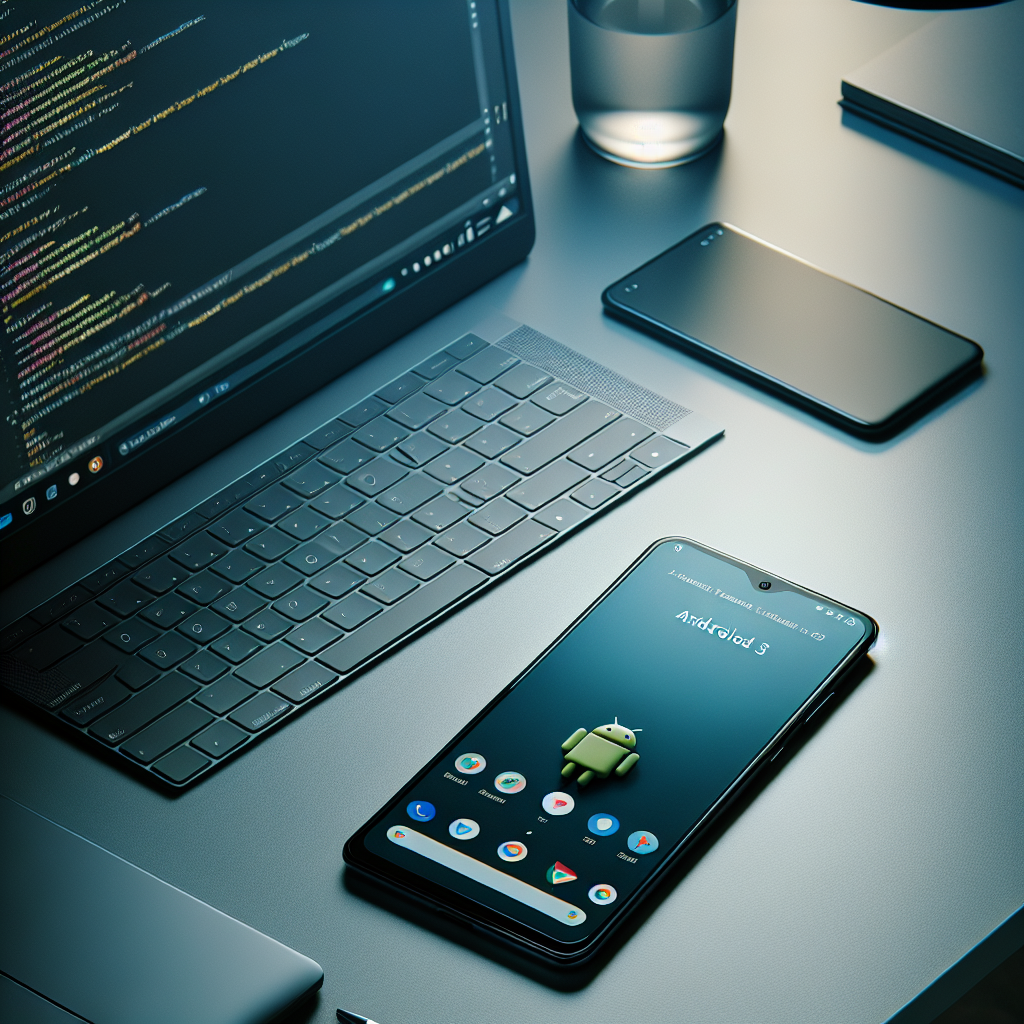What is Mobile Application Development? A Clear Definition
In today’s digital era, mobile application development has become a cornerstone of innovation and functionality. It’s the process through which software applications are created specifically for use on mobile devices, such as smartphones and tablets. These applications can be pre-installed on devices during manufacturing platforms, or delivered as web applications using server-side or client-side processing to provide an app-like experience within a web browser.
The increasing reliance on mobile devices for both personal and professional activities has fueled the demand for high-quality mobile apps. From social networking and gaming to business and healthcare, mobile apps span a wide range of categories, each designed to solve specific user problems or enhance particular experiences. The development of these applications involves a variety of stages, including concept, design, coding, testing, and deployment. This process ensures the final product is not only functional but also user-friendly and engaging.
Whether you’re a startup looking to make your mark or an established business aiming to expand your digital presence, understanding what mobile application development entails is crucial. By leveraging the right tools and expertise, you can create applications that not only meet but exceed user expectations.
Ready to bring your app idea to life? Get a free quote from our experts at NS804 today!
Definition of Mobile Application Development

Mobile application development refers to the creation of software applications that run on mobile devices. These applications are designed to leverage the unique features and hardware of mobile devices, providing an optimized user experience. The development process encompasses a range of activities and methodologies aimed at building applications that are both functional and user-friendly.
At its core, mobile application development involves several critical stages:
- Conceptualization: This initial phase involves brainstorming and defining the app’s purpose, target audience, and core features.
- Design: In this stage, developers create wireframes and prototypes to visualize the app’s layout and user interface.
- Coding: This is where the actual development happens. Developers write the code that brings the app to life, often using languages and frameworks that are specific to the intended platform (e.g., Swift for iOS, Kotlin for Android).
- Testing: Comprehensive testing ensures that the app is free of bugs and performs well across different devices and operating systems.
- Deployment: Once the app is fully developed and tested, it is released to app stores like Google Play and the Apple App Store, making it available for users to download.
Mobile application development can be native, hybrid, or web-based, each having its own set of advantages and technical requirements. Native apps are developed for a specific platform and provide the best performance and user experience. Hybrid apps, on the other hand, are cross-platform and can run on multiple operating systems, whereas web-based apps are essentially websites optimized for mobile viewing.
Understanding the definition of mobile application development is essential for anyone looking to create a mobile app, as it provides a comprehensive overview of what the process entails and the key considerations involved.
Importance of Mobile Application Development

The importance of mobile application development in today’s digital landscape cannot be overstated. As mobile devices become an integral part of our daily lives, businesses across all sectors are recognizing the need to establish a strong mobile presence. Here are several reasons why mobile app development is crucial:
- Enhanced Customer Engagement: Mobile apps provide a direct channel for businesses to interact with their customers. Features like push notifications, in-app messaging, and personalized content help maintain constant engagement and foster stronger customer relationships.
- Improved Accessibility: With a mobile app, customers can access your services and products anytime, anywhere. This level of accessibility significantly enhances user convenience and satisfaction.
- Brand Visibility and Recognition: A well-designed mobile app can serve as a powerful branding tool. Frequent use of your app by customers increases brand awareness and strengthens brand loyalty.
- Data Collection and Analysis: Mobile apps allow businesses to collect valuable user data and gain insights into customer behavior. This information can be leveraged to make informed decisions, improve services, and tailor marketing strategies.
- Competitive Advantage: In a highly competitive market, having a mobile app can set your business apart from competitors who may not have embraced mobile technology. It showcases your commitment to innovation and staying current with technological trends.
- Revenue Generation: Mobile apps can be monetized through various strategies such as in-app purchases, subscription models, and advertising. This creates additional revenue streams for businesses.
Furthermore, the ongoing advancements in mobile technology, such as the rise of 5G and the increasing capabilities of smartphones, continue to expand the possibilities for mobile app development. As a result, businesses that invest in mobile apps can stay ahead of the curve and better meet the evolving needs of their customers.
Key Components of Mobile Application Development
Understanding the key components of mobile application development is essential for creating successful and user-friendly apps. These components serve as the building blocks that ensure the app’s functionality, performance, and user experience. Here are the primary elements involved:
- User Interface (UI) and User Experience (UX) Design: The design phase focuses on creating an intuitive and visually appealing interface while ensuring a seamless user experience. This includes wireframes, prototypes, and user feedback to refine the design.
- Front-End Development: This involves coding the visual elements that users interact with. Technologies like HTML, CSS, and JavaScript are commonly used for cross-platform apps, while Swift and Kotlin are used for native iOS and Android apps, respectively.
- Back-End Development: The back-end handles the server-side logic, database interactions, and API integrations. It ensures that the app’s front-end can communicate effectively with the server and manage data processing.
- APIs and Integrations: APIs (Application Programming Interfaces) allow the app to interact with other software and services. Integrations with third-party services like payment gateways, social media platforms, and analytics tools enhance the app’s functionality.
- Security: Implementing robust security measures is crucial to protect user data and prevent unauthorized access. This includes encryption, secure authentication, and regular security audits.
- Testing and Quality Assurance: Rigorous testing is essential to identify and fix bugs, ensure compatibility across devices, and optimize performance. This includes functional testing, usability testing, and performance testing.
- Deployment and Maintenance: After development and testing, the app is deployed to app stores like Google Play and the Apple App Store. Ongoing maintenance and updates are necessary to address user feedback, fix issues, and add new features.
Each of these components plays a vital role in the overall mobile app development process. By paying close attention to these elements, developers can create high-quality apps that meet user expectations and provide a competitive edge in the market.
Mobile Application Development Process

The mobile application development process is a structured approach that ensures the creation of functional, user-friendly, and high-performance mobile apps. This process involves several stages, each with its own set of tasks and objectives. Here’s a detailed look at the typical steps involved:
- Planning and Research: This initial stage involves defining the app’s purpose, target audience, and key features. Market research is conducted to understand user needs, analyze competitors, and identify trends. This phase lays the foundation for the app’s development.
- Requirement Analysis and Documentation: Detailed requirements are gathered from stakeholders and documented. This includes functional specifications, user stories, and technical requirements. Clear documentation ensures that all team members have a shared understanding of the project’s goals.
- Design: The design phase includes creating wireframes, mockups, and prototypes. This helps in visualizing the app’s layout and user flow. User feedback is often gathered to refine the design and ensure it meets user expectations.
- Development: During this phase, front-end and back-end development take place simultaneously. Front-end developers focus on the user interface and user experience, while back-end developers handle server-side logic, database management, and API integrations.
- Testing: Rigorous testing is conducted to identify and fix bugs, ensure compatibility across various devices, and optimize performance. This includes functional testing, usability testing, security testing, and performance testing to ensure the app meets quality standards.
- Deployment: Once the app passes all tests, it is prepared for release. This involves creating developer accounts on app stores like Google Play and the Apple App Store, complying with their guidelines, and submitting the app for review.
- Maintenance and Updates: Post-launch, continuous monitoring and maintenance are essential to address any issues, release updates, and add new features. User feedback plays a crucial role in guiding these updates and ensuring the app remains relevant and competitive.
Each stage of the mobile application development process is crucial for delivering a successful app. By following a systematic approach, developers can ensure that the final product meets users’ needs, performs well, and stands out in the crowded app market.
Future Trends in Mobile Application Development

As technology continues to evolve, the landscape of mobile application development is also rapidly changing. Staying ahead of future trends is essential for developers and businesses to remain competitive and deliver cutting-edge solutions. Here are some of the most promising trends shaping the future of mobile app development:
- Artificial Intelligence and Machine Learning: AI and ML are transforming mobile apps by enabling personalized experiences, predictive analytics, and advanced user interactions. From voice assistants like Siri and Google Assistant to recommendation engines in e-commerce apps, AI is enhancing functionality and user engagement.
- 5G Technology: The rollout of 5G networks is revolutionizing mobile app development by providing faster internet speeds, lower latency, and improved connectivity. This opens up new possibilities for augmented reality (AR), virtual reality (VR), and real-time gaming applications.
- Cross-Platform Development: With tools like Flutter and React Native, developers can create apps that work seamlessly across multiple platforms with a single codebase. This trend reduces development time and costs while ensuring a consistent user experience on both iOS and Android devices.
- Internet of Things (IoT): IoT integration is becoming increasingly prevalent in mobile apps, allowing users to control and monitor smart devices through their smartphones. From smart home automation to wearable health devices, IoT is creating new opportunities for innovation.
- Blockchain Technology: Blockchain is gaining traction beyond cryptocurrencies and is being integrated into mobile apps for enhanced security, transparency, and decentralization. Applications in finance, supply chain, and healthcare are particularly benefiting from blockchain solutions.
- Augmented Reality (AR) and Virtual Reality (VR): AR and VR technologies are expanding beyond gaming into various industries such as retail, education, and healthcare. These immersive technologies provide unique user experiences and are set to become mainstream in mobile app development.
- Enhanced App Security: With the increasing number of cyber threats, app security is becoming a top priority. Developers are implementing advanced security measures like biometric authentication, encryption, and secure APIs to protect user data and ensure privacy.
These trends highlight the exciting possibilities and innovations that lie ahead in mobile application development. By embracing these advancements, businesses can create apps that are not only functional and efficient but also future-ready.
Ready to bring your innovative app idea to life? Get a free quote from NS804, your trusted partner in custom mobile app development.
















